#divinity: fertility
Explore tagged Tumblr posts
Text
holistic womb healing tip:
aim to keep your womb warm by avoiding or limiting the amount of cold you put into your body and replacing it with warm foods + liquids. this increases blood flow to the uterus and aids in fertility! even if you're not trying to get pregnant, on a spiritual level, having a fertile womb allows you to naturally magnetize the things that you want in life with ease.

#daportalpractitioner#holistic health#womb healing#womb health#cycle syncing#womb#menstrual cycle#uterus#menstrual health#womens health#ayurvedic#chinese medicine#astroblr#spirituality#fertility#divine feminine#divine feminine energy#goddess
276 notes
·
View notes
Text

#goddess figurine#goddess worship#red goddess#babalon#neolithic style goddess#fertility goddess#root chakra#divine feminine#infernal divine#primal goddess#dark feminine#underworld goddess#godess#sacred woman#divine femaleness
36 notes
·
View notes
Text

Blessed Beltane 🏵️🌱🌼
#beltane#may day#pagan#wicca#wiccan#first of may#may first#witch#witchcraft#witchy#pagan holiday#fire festival#sabbat#sabbats#spell#spell work#divination#tarot#spring#summer#the goddess#the horned god#fertility#fertility festival#moodboard#witchy moodboard#wheel of the year
72 notes
·
View notes
Text

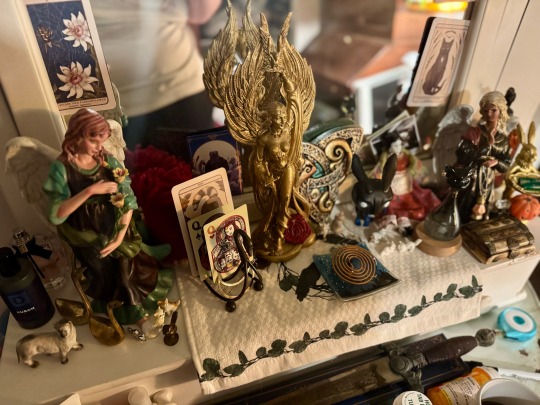


It was time to freshen up the altar. Now that we’re working on having a baby I need everyone’s support on hand. I’ve plugged a ritual/meditation routine into my finch app and I’m ready to go!
I’ve decided to have designated offering days to my three primary deities so that I can make sure I’m giving at least a little focus to each every week because I’ve been SLACKING!
I’m also busting out the medicinal teas, tonight’s tea (with both fertility and peace in mind) is mint, lavender, and raspberry leaf.
✨😎✨
#altar#witchblr#an morrigan#the Magdalene#Brigid#Macha#the black rabbit#divination#witchcraft#magic#Irish pagan#irish witch#irish witchcraft#draoi#Draíocht#fertility magic#offerings#spring cleaning#Xero#Airmid#personal practice#paganism#mo cú#mo anam#mo rí#Lir#adhd paganism#an cailleach#an Fíodóir
14 notes
·
View notes
Text
Candle Magick 101
✧⋄⋆⋅⋆⋄✧White Candle✧⋄⋆⋅⋆⋄✧ ✦Clarity ✦Protection ✦Pure Love ✧⋄⋆⋅⋆⋄✧Red Candle✧⋄⋆⋅⋆⋄✧ ✦Health ✦Passion ✦Defensive ✧⋄⋆⋅⋆⋄✧Purple Candle✧⋄⋆⋅⋆⋄✧ ✦Magic ✦Ambition ✦Spirituality ✧⋄⋆⋅⋆⋄✧Yellow Candle✧⋄⋆⋅⋆⋄✧ ✦Confidence ✦Visualization ✦Intelligence ✧⋄⋆⋅⋆⋄✧Blue Candle✧⋄⋆⋅⋆⋄✧ ✦Psychic ✦Spirituality ✦Higher Self ✧⋄⋆⋅⋆⋄✧Black Candle✧⋄⋆⋅⋆⋄✧ ✦Protection ✦Reverse Spells ✦Absorbs Negativity ✧⋄⋆⋅⋆⋄✧Pink Candle✧⋄⋆⋅⋆⋄✧ ✦Self-love ✦Weddings ✦Emotional Ties ✧⋄⋆⋅⋆⋄✧Green Candle✧⋄⋆⋅⋆⋄✧ ✦Money ✦Fertility ✦Healing ✧⋄⋆⋅⋆⋄✧Brown Candle✧⋄⋆⋅⋆⋄✧ ✦Earth ✦Harmony ✦Spirit Animals ✧⋄⋆⋅⋆⋄✧Bronze✧⋄⋆⋅⋆⋄✧ ✦Business ✦Rewards ✦Professional Growth ✧⋄⋆⋅⋆⋄✧Silver✧⋄⋆⋅⋆⋄✧ ✦Psychic ✦Intuitive ✦Personal Growth ✧⋄⋆⋅⋆⋄✧Orange✧⋄⋆⋅⋆⋄✧ ✦Attraction ✦Courage ✦Success
#candles#candle magic#candle making#psychic#personal growth#prosperity#rewards#spirit animal#fertility magick#grimoire#baby witch#freyja#green witch#hedge witch#divination#pagan witch#paganblr#witch community#beginner witch#witch tips#protection spell#love magic#love manifestation#spirituality#spiritual development#diy#deity worship#book of shadows
169 notes
·
View notes
Text

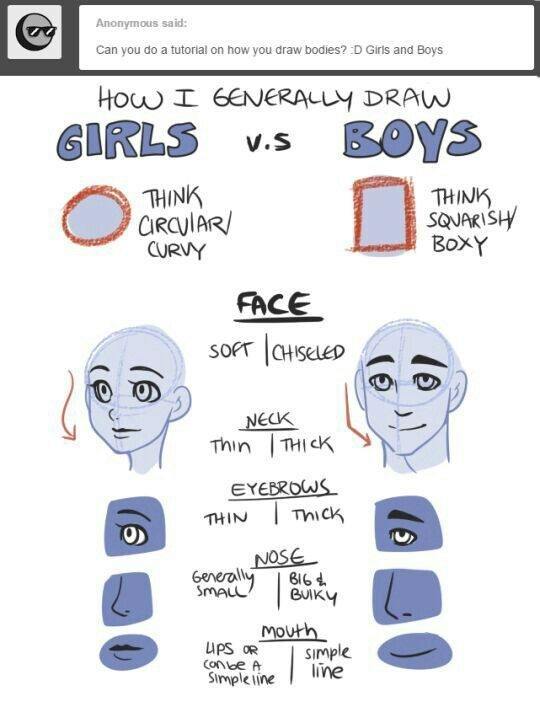

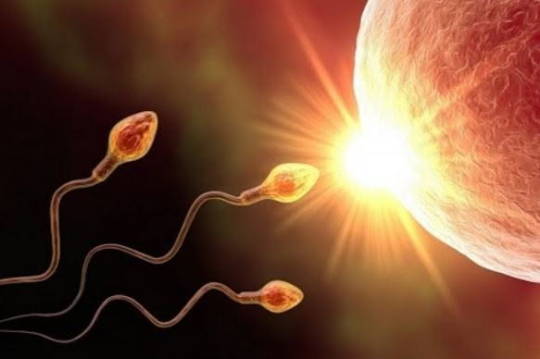
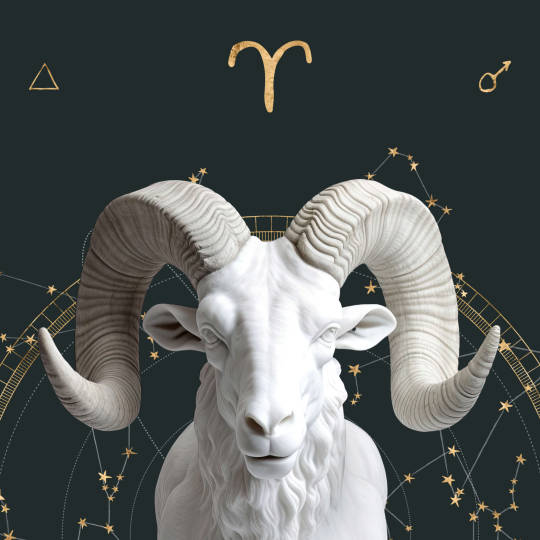

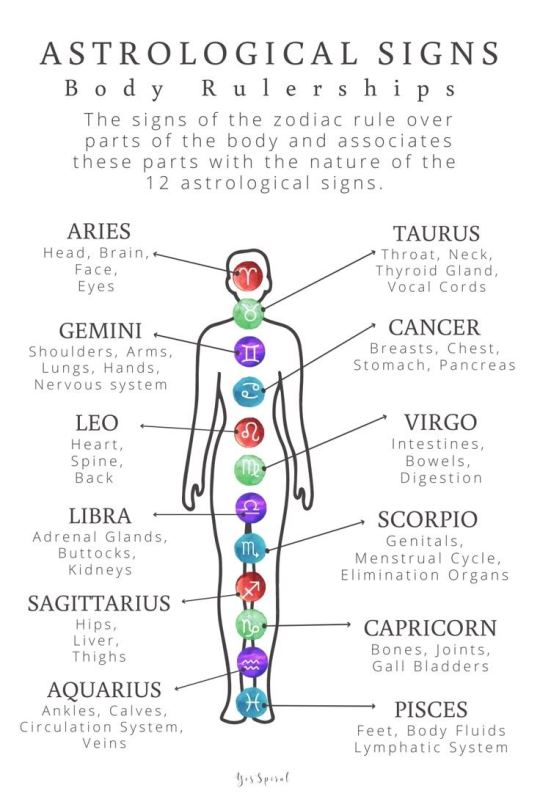

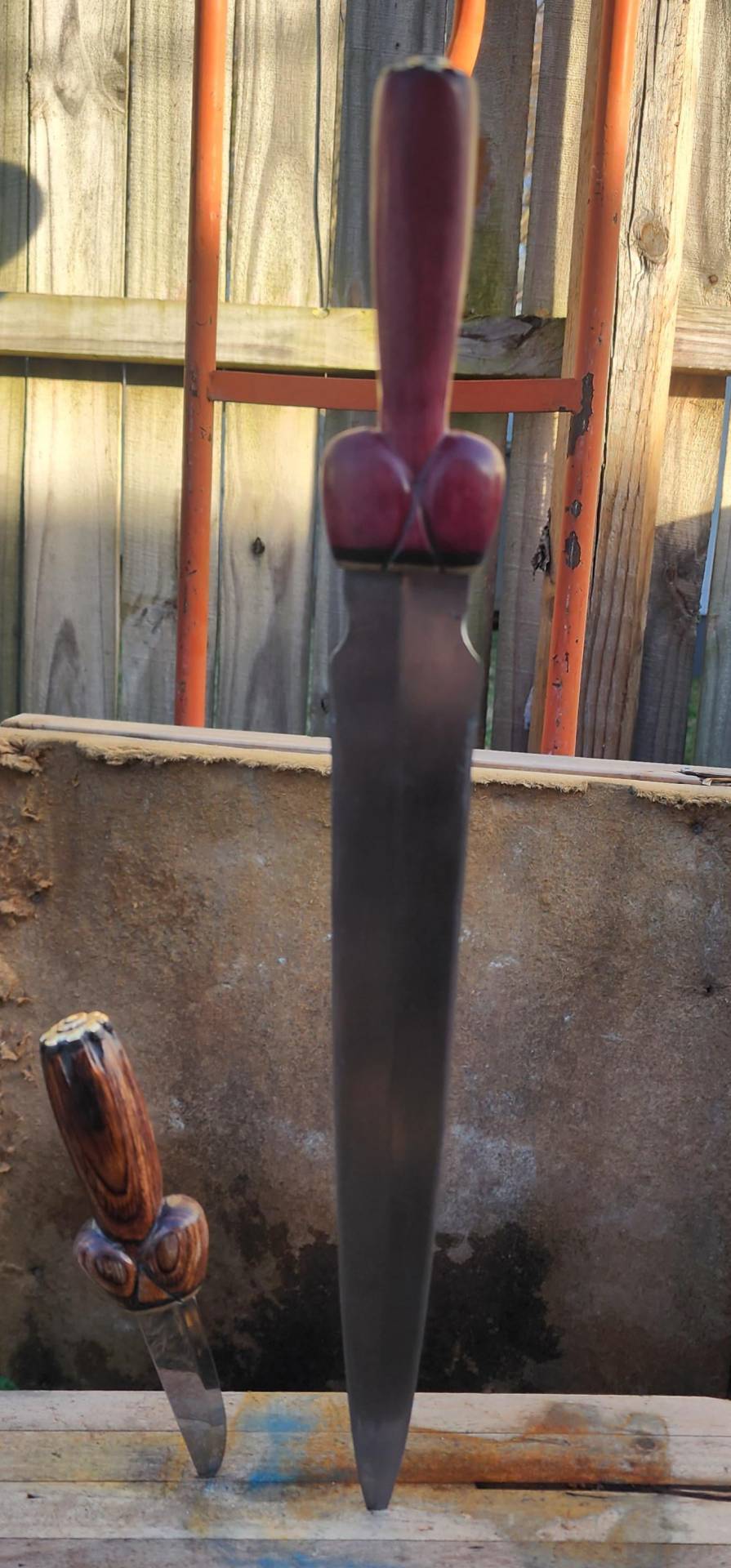

The Metaphysical and Occultic Numerological Breakdown of the Number 1 Across Cultural Lines and Its Relation to the Planet Mars and Zodiac Aries
1 looks like a sword and a penis, because it is a straight line. Straight lines are masculine, curved lines are feminine (this is also true for cartoon drawings you'll notice women are drawn with softer curvier lines while male characters typically are drawn with straight lines). Okay now revisiting the masculine and femininity of 1 and 2. We can see that 1 is a straight line like the masculine characters in a cartoon. 2 is the first curved number of the number system. Hence the curve at the top of the number two.
1 is associated with Aries ♈️ since aries is the 1st sign of the zodiac. Aries, is ruled by the planet Mars. Therefore mars is also associated with the number 1. Mars is also a masculine planet. Mars is red which mimics blood and is also associated with the blood of the body. Mars is associated with war (flip the m upside down equals a w, this is the occultic cipher also called an anagram or cryptic crossword). If you rearrange the letters for Mars, you get arms (arms are weapons, Mars is associated with weapons). If you rearrange the letters of Mars again, you get Rams 🐏. Rams (or lambs) are the animal associated with the 1st sign of the aries in the zodiac. They are animals that butt each other with their heads. Making the number 1 and the sign of aries, associated with the actual head of the human body.
The number 1 is also indicative of the 1st "spark of life" which is when the ovum (egg) comes into contact with the sperm (there is a literal spark of light that can be visibly seen when this happens. The sperm themselves also mimic a straight line which is sympathically associated with the shape of the number 1. 1 also represents the ovum or egg itself being alone and unfertilized depending on what view you choose to take, the voided womb could also technically represent 0 zero, the infinite undetermined potentiality.
Amun Ra one of the 1st spirits of the Ogdoad (the 4 twins, totaling 8, of the Egyptian pantheon). He is represented by the Rams Head on a human body. He is to represent the age of Aries, the 1st astronomical age (the ages go backwards, ie. From aries to Pisces and now we're currently in aquarius. These are indicators of markers of astronomical time, you can use the animals depicted and how they're placed on earth to date when they were constructed). Rams and Lambs are actually the same animal just bred different or in different stages of their lives, because of this aries or the number 1 is also the Lamb of God, (especially when the Su(o)n of God 🌅 passes into the sign of Aries! Which is this time of year, SPRING!)
This is why they say Adam (adamu="blood", or "first/original man" in Phoenician) or man came first before woman, because astronomically, zodiacally, and numerically the masculine principle does come first.
So, the number 1 is simple yet powerful and undeniably profound. But what happens when we look at it's twin, the number 2. Stay tuned because understanding the feminine side of this equation is just as enlightening. I will also finish instead with 0 rather than 9 at the completion of this series to explain an even deeper principle that many modern numerologists tend to gloss over in relation to the invisible number. It is the most profound and therefore deserves to be saved for last.
Every picture holds a thousand words, numbers do too.
-Nagini Serene
Waning Crescent, 14% 4/24/25 22:52
#Metaphysics#Spirituality#Numerology#Astrology#Astronomy#Occultist#esoteric#mysticism#occultism#Horoscope#Astrologer#1st house#Aries#Mars#Fertility#angel numbers#Numbers#Divine mathematics#Mathematics#Sufism#Kabbalism#Phoenician#Sea people#Moors#bill cipher
7 notes
·
View notes
Text
Low-quality sperm is the leading cause of infertility. Man’s quality of inner light is of the utmost importance.
21 notes
·
View notes
Text
short vs. long luteal phase
did you know that your luteal phase is a key indicator for fertility? in a healthy cycle, your luteal phase (which happens right after ovulation) is between 10-17 days. it's important that you are experiencing your luteal phase in its ideal range for womb health regulation, which is responsible for your ability to magnetize + manifest.

a short luteal phase is less than 10 days, meaning that your bleed phase begins less than 10 days after ovulation. having a short luteal phase puts you at risk for infertility + miscarriages because the uterine lining isn't think enough to sustain an embryo.
a long luteal phase is more than 18 days. having a long luteal phase can be associated with hormonal imbalance, such as polycystic ovary syndrome (PCOS) — a leading cause of infertility.
#daportalpractitioner#womb health#luteal phase#menstrual cycle#cycle syncing#hormonal imbalance#spirituality#manifesting#manifestation#moon#divine feminine#divine fem#divine feminine energy#goddess#luteal#pcos#fertility#holistic health
102 notes
·
View notes
Text

Holy Priestess, draped in white silk
Your aura matches your skin, golden glowing galaxies.
Mysterious and divine, I wish to feel your warmth
Your nurturing power guides me home to truth
Open your heart to me and I will graciously protect this most vulnerable treasure
You are a Queen of sweet essence.
Once I get a taste, my molecules begin to bounce wildly as my mind tries to comprehend this level of divinity.
// Artwork: Yosuke Ohnishi (airbrush, 1982)
#self love#genuine#self healing#awareness#spirituality#healing#writing#grateful#my writing#poetry#divine feminine#divine guidance#lovetheskinyourein#artwork#passion#dnangelic#angel dust#soft girl#healing era#gratitude#grounding#health and wellness#fertility#woman beauty
23 notes
·
View notes
Text
What The Cult of Aphrodite Reveals About Ancient Attitudes Towards Love—And Desire
A Mix of Ancient Divinities, Aphrodite Was Patron Over Love, Beauty, Fertility, and War. But The Venerated Greek Deity Has a More Complex Rise To Fame Than One Might Think.
— By Bettany Hughes | January 9, 2025

The Birth Of Aphrodite! Aphrodite, Greek Goddess of love, became Venus in the Roman pantheon. This mural, “The Birth of Venus,” Painted Before A.D. 79 and Found at the House of Venus in the Shell in Pompeii, Depicts the Goddess Being Born From a Seashell. Scala, Florence
The Greek Olympian gods were a wild, dysfunctional, divine family. Believed to live on the beautiful slopes of Mount Olympus in northern Greece, these supernatural creatures were thought to look like humans–only bigger, brighter, and stronger. The Olympian gods and goddesses incarnated human qualities such as wisdom (Athena), reason (Apollo), and love (Aphrodite), but they were far from perfect. They drank, had affairs, and spitefully meddled in the lives of humans. Capable of shape-shifting, they could turn up where you least expected them, disguised as a stranger at your door or as a rainbow, appearing as a breath of wind around the corner or as a monster in a raging sea. From Zeus, the king of the gods, downward, they were not to be messed with.
The Creation of a Goddess
The birth of Aphrodite, the ancient goddess of sexual love, was a gruesome affair. Aphrodite’s story, sung by ancient Greek poets and set down in some of the earliest prose from the Greek world, is a myth to remember, a dreadful tale. The Greeks believed that before the beginning of the world, there was an endless, formless, primordial night. And that from this nothingness came extraordinary power. The great earth goddess Gaia had married her own son, the looming sky god Uranus, but it was not a happy union. The two deities made loveless love. Uranus, hating the children they conceived (the Titans, Cyclopes, and Hecatoncheires), trapped them inside Gaia’s belly of the earth. Sick of this eternal copulating, one day Gaia persuaded another of her sons, Cronus, to help. Taking up a serrated sickle—some poets said it was made of adamite, others of flint—Cronus frenziedly hacked off his father’s penis and testicles. Roaring with unimaginable pain, Uranus violently broke off his incestuous embrace, separating earth and the heavens. Uranus’s bloody, spurting, amputated sex plummeted into the seas below. This visceral, broiling mass drifted east from the island of Kythera, in southern Greece, toward the wild seas around Cyprus. And here, the archaic Greek author Hesiod tells us in his catalogue of creation myths, Theogony, from the foaming mess arose “an awful and lovely maiden.” This maiden-goddess was Aphrodite, or Venus as she would come to be called in the Roman world.

This Fresco by Giorgio Vasari in the Palazzo Vecchio, Florence, Depicts Cronus Castrating His Father, Uranus. Cronus Threw the Severed Genitals into the Sea, and Aphrodite was Born From the Foam.
As this radiant teenager stepped onto the barren earth, grasses and flowers sprang up from beneath her “shapely feet.” Her arrival generated some of the most beautiful accounts in ancient Greek literature. The following is an extract from Kypria, an ancient epic poem about Aphrodite (translation by Barbara Breitenberger):
She set on her skin the garments which the Graces and the Seasons had made and dyed in the flowers of spring-time, garments such as the Seasons wear, dyed in crocus and hyacinth and in the blooming violet and in the fair flower of the rose and fragrant, and in ambrosial flowers of the narcissus and lily.

Many traces of Aphrodite’s Fame Remain in Cyprus 🇨🇾, Such as Petra tou Romiou, a Sea Stack on the Coast of Paphos that was Believed to Mark the Place Where Aphrodite Emerged from the Waves. Neil Farrin/AWL Images (Left)
Cyprus 🇨🇾, Land Of Fertility Figurines: Numerous intriguingly shaped intersex figurines dating back 5,000 years, and presumably connected with fertility, have been found on the island of Cyprus. Arms outstretched, they have the body of a woman, and marked breasts and vulvas, but their heads and necks are clearly phalli. Some of these figurines are tiny, made of the pale green stone picrolite. Some are small enough to hold in the palm of the hand; others are pierced so that they can be worn around the neck. The object shown here is the “Lady of Lemba,” a 14-inch-high limestone figure with wide hips and a pregnant belly. She is the incarnation of sex and procreation, the mixing and mingling of bodies. Statues and figurines like this one represent an increase in goddess cults in the Mediterranean and surrounding cultures. These embodiments of sex and procreation were also forerunners of Aphrodite. Print Collector/Getty (Right)
So, we think we know Aphrodite. We think we know that she is a sweet-smelling goddess of love who pops up once a year on Valentine’s Day cards. But psychologically, historically, archaeologically, she is more than that: Aphrodite is a creature of potency and influence across time and space. As investigations in Europe, Asia, and North Africa reveal, her worship tells us much about attitudes toward desire, taboo, love, lust, and the complex challenges of civilization.
Unearthing Aphrodite’s Ancestors
My historical detective hunt began in the east. When I was last in Cyprus, in the Larnaca District Museum, researchers were scanning a tiny necklace of golden pomegranates, 3,500 years old, recently excavated from the grave of a young child. Pomegranates have long been Aphrodite’s fruit, their color symbolizing both fertility and death. A golden pendant was found nearby, engraved with the image of the Bronze Age eastern deity of fertility, pleasure, and pain, Astarte. Along with the delicate jewelry were curious, female figurines—women with the faces of birds—very similar to those found in Syria and the Levant, just 250 miles east across the Mediterranean Sea. We know that sailors and traders came from the east to Cyprus from at least 2500 B.C. onward, bringing ideas and cultural influence as well as goods and gifts. Critically, in the case of Aphrodite, these travelers imported the idea of a deity who was responsible for desire of all kinds—not just love, but also lust for war, conquest, and control. Because in a region that spans modern-day Iraq, Syria, Jordan, Israel, the Palestinian territories, Anatolia, and Egypt, during a time when the skeletal evidence (shins hacked with axes, arrows in eye sockets, shoulder blades sliced with machetes) tells us that intertribal and interclan violence was almost constant, communities dreamt up the notion of a tempestuous, divine entity. This sublime, fickle female god, called variously Inanna, Ishtar, and Astarte, was the incarnation of the desire for conflict and carnal relations.
These eastern Aphrodite equivalents were ardently adored. The goddess Inanna presided over 180 sanctuaries in Babylon alone. The Egyptian pharaoh Amenhotep III asked for a statue of potent Ishtar to be brought from the city of Nineveh to help banish a mysterious sickness in his kingdom, and Astarte, often portrayed with horns, would decorate the prows of ships plied by Phoenician traders. A totemic figure to bring luck and protection, Astarte was fecund and feisty, and an inspiration for the voluptuous figureheads that became so popular on galleons beginning from the 16th century onward. All of these eastern goddesses were thought to inhabit the sky in the form of the “star” we still call Venus, now correctly classified as a planet. Cyprus too boasts fascinating fertility figures, dating back 5,000 years. These are also the eastern-island ancestors of Aphrodite.

Lady Of Galera: This Statuette Depicting Astarte, the Phoenician Goddess of Fertility, was made in the seventh century B.C. in the eastern Mediterranean. It was found in a royal Iberian tomb at Galera, Spain. Album (Left) Queen Of The Night: Found in Babylon and dated to the 18th century B.C., this Clay Plaque Depicts what may be an Incarnation of Inanna or Ishtar, the Mesopotamian Goddess of Sexual Love and War. British Museum/Scala, Florence (Right)
Although the Greeks asserted that Aphrodite’s name derived from the Greek for “foam-born” (aphros is Greek for “sea foam”), it seems far more likely her name stems from the Phoenician Ashteroth, which was then Hellenized to become Astarte and adapted to become Aphrodite. The Aphrodite who emerged from the coasts of Cyprus was constitutionally a creature of both east and west. As an entrepôt for the prehistoric, international copper trade, Cyprus was a cauldron of cultural influence. Copper gets its name from the island of Cyprus, and Aphrodite herself came to be called Kypria, or the Kyprian goddess. Copper, when mixed with tin, fueled the advances of Bronze Age civilization. Boats piled with copper ingots plied their way to Cypriot ports from the Levant, Egypt, Mesopotamia, and mainland Greece. Greek Mycenaean influence brought to Cyprus the notion of a fertility deity who incarnated beauty of body and soul. As all these influences cross-fertilized on Cyprus, Aphrodite, both ferocious and fabulous, was truly born.
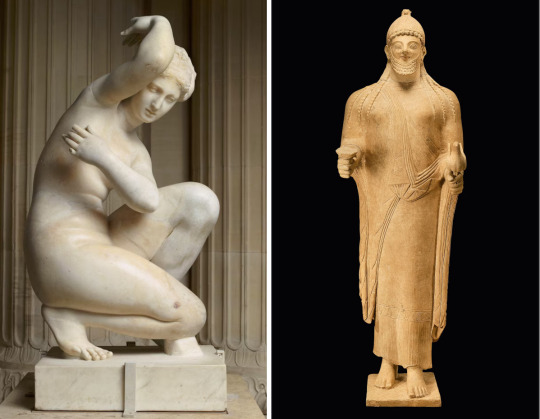
Bathing Beauty: This Crouching Position is Typical in Some Later Representations of Aphrodite. This is a Roman Marble Replica of a Greek Bronze Original. H. Lewandowski/RMN-Grand Palais (Left)
Priest Of Aphrodite: This limestone Sculpture, made in the sixth century B.C. at the Cypriot site of Golgoi, depicts a figure holding a dove in one hand. An inscription on the left shoulder, reading “of the Paphian Goddess,” is a reference to Aphrodite. Metropolitan Museum Of Art, New York (Right)
Sacrifices to the Goddess
Since Aphrodite was a goddess whose purview was human relations of all kinds, romantic and antagonistic, she came to be a totemic protectress of cities. In Athens the entire Acropolis rock, crowned by the famous Parthenon temple (built for the goddess of wisdom, Athena Parthenos), was sacred not to Athena but to her sister Aphrodite. Citizens of the city would leave offerings to her in niches carved into the sides of the towering, pink-granite outcrop: pomegranates, scented oils, or cups of milk. Some young romantics in the city still honor the goddess of love at the Acropolis in the same niches, in the same way. There were shrines to Aphrodite in the Athenian Agora, where the birds she loved, doves (the Greek name for dove, peristera, almost certainly derives from the Semitic perah Ishtar, the bird of Ishtar), had their tongues cut out and blood sprinkled on altars in her honor. In this flagship democratic city, it was vital that the residents respected one another. Aphrodite was thought to offer a kind of cosmic glue for ancient society. This tradition continued. There is even an image of Aphrodite protecting the great Christian city of Constantinople, as she hovers in the corner of one of the earliest maps of the metropolis.

This 1871 Painting by the Artist Giuseppe Sciuti Depicts an Idealized Scene of Young Roman Women Making a Springtime Offering at a Temple Dedicated to Venus. Dea/Album
Long associated with flowers and perfumes, Aphrodite’s worship must have been a heady experience. In the great sanctuary of Old Paphos on Cyprus, close to where she was believed to have emerged from the sea, lilies, violets, and sweet myrtle were grown. There were ponds of lotuses and arches of roses; this is why we now exchange over 250 million roses on Valentine’s Day. The Sanctuary of Aphrodite at Old Paphos was one of the biggest in the ancient world. No blood sacrifice was allowed; only the burning of expensive incense from Arabia and libations of olive oil, honey, and wine. Local ceramic pots from the eighth century B.C. show a Cypriot goddess or high priestess drinking some kind of potent brew through a straw–quite possibly laudanum or opium-laced wine.
Given the goddess’s delight in pleasures of the flesh, it’s unsurprising Aphrodite was also a patron of sex workers. One writer in the Roman Republic, Ennius, translating the Greek author Euhemerus, goes so far as to credit her with the invention of “the oldest profession.” Excavations in central Athens have unearthed a beautiful silver medallion in the brothel district of the city, Kerameikos. Here, narrow stalls housed female and male sex slaves of the Athenian Empire. We can only hope the protection of their love goddess offered them some comfort.
Historical accounts, such as that of Herodotus, Greece’s father of history, asserted that sacred sex workers operated at Old Paphos and at Aphrodite’s other sanctuaries, including the sanctuary of Mylitta in Babylonia. And because she was a goddess who historically traveled by sea, and who was all about mixing and mingling across borders and boundaries, Aphrodite was much adored in ports. With the influx and egress of international sailors, brothels were a regular feature of port cities.
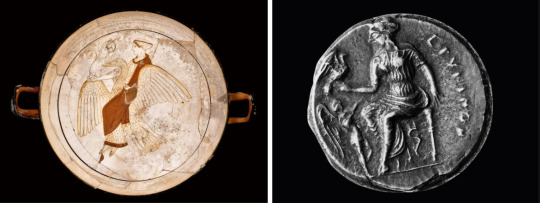
A Fifth-Century B.C. kylix (Cup For Drinking Wine) is Decorated with an Image of Aphrodite Riding a Goose. Scala, Florence (Left). This Silver Tetradrachm was Minted in Eryx (Modern-Day Erice), Sicily, Around 400 B.C. Aphrodite is Seated, Holding a Dove in her Right Hand and Facing Her Son Eros, known in Latin as Cupid. Alamy/Cordon Press (Right)
The Universality of Aphrodite
Aphrodite was adored in fine sanctuaries at Cnidus in Anatolia (“Aphrodite of Cnidus” by Praxiteles is one of the most famous statues of the goddess), at Syracuse in Sicily, and at Pompeii in the Bay of Naples. When Venus became the presiding deity at Pompeii in 89 B.C., the city was officially renamed Colonia Cornelia Veneria Pompeianorum.
Venus, Patroness of Pompeii
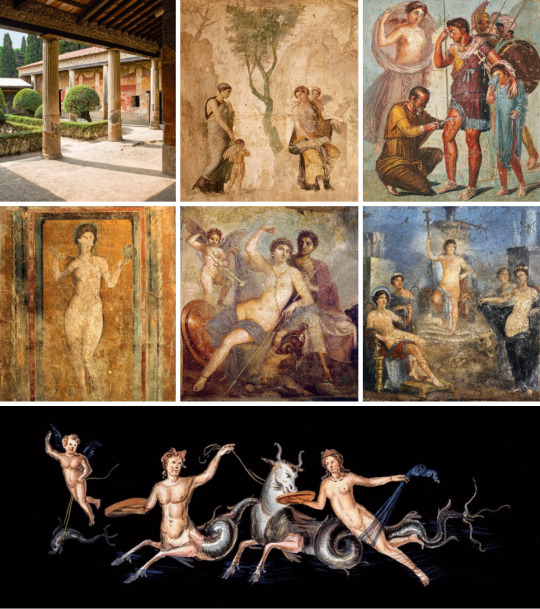
Top: Left to Right
Devine Design: This peristyle surrounds the inner garden of the first-century A.D. House of Venus in the Shell in Pompeii, which gets its name from the fresco depicting Venus, protectress of Pompeii. The city was destroyed in the volcanic eruption of A.D. 79, but the fresco survived relatively intact. Guido Baviera/Fototeca 9X12
Venus-Aphrodite became the most venerated deity in the Roman city of Pompeii. Archaeologists have found murals featuring Venus in many of the houses that have been excavated, including “The Punishment of Eros,” a first-century fresco at Pompeii. It depicts Aphrodite about to chastise her son for firing his arrows of love irresponsibly. Scala, Florence
A Mother's Love: This first-century A.D. artwork in Pompeii shows the Trojan hero Aeneas being treated for a wound to his thigh. Next to Aeneas appears his mother, Venus-Aphrodite, who looks on with concern. Luigi Spina/Electa/Album
Middle: Left to Right
Venus Anadoyomeme: This first-century painting from the House of the Prince of Naples, Pompeii, depicts a Venus Anadyomene, meaning “Venus rising from the sea.” The nude goddess, who has just been born, holds a mirror as she emerges from the waters. Album
Venus And Mars: This fresco depicts the god of war and the goddess of desire as lovers. The first-century painting decorates the House of Mars and Venus in Pompeii. Scala, Florence
Venus And Hesperus: The god Apollo (at far left) presides over the competition between Venus, goddess of love (at far right), and Hesperus (center), the evening star. The first-century fresco is from the House of Gavius Rufus, Pompeii. Album
Bottom:
Venus is carried along by a sea monster driven by a Triton in this copy of a first-century painting from Pompeii. Album
But Aphrodite was also believed to inhabit modest homes too, as a patron who presided over marriages and family relations. The great democratic reformer of Athens, Cleisthenes, had coins minted; the goddess Athena was on one side, and on the reverse was Aphrodite as Aphrodite Pandemos, meaning “of all the people.”
Ancient deities embody universal ideas, so unsurprisingly, early Romans did have their own homegrown goddess of fertility and procreation, whom they called Venus. Once Romans had conquered Greek territories after the fall of Corinth in 146 B.C., Venus and Aphrodite frequently became interchangeable. For the Romans, feisty Venus-Aphrodite’s domain of desire, ambition, and prowess in war made her the perfect deity to sit front and center of their mythical narrative. Venus, Romans said, had given birth to the Trojan hero Aeneas, who, fleeing the devastation of the Trojan War, then went on to establish the Julian dynasty. Descendants of the Julians, the twins Romulus and Remus, would found Rome. So, Venus was considered the godmother of the Roman Republic and of its imperial ambitions. In Virgil’s epic poem Aeneid, in a conversation with Venus, we hear that Aeneas’s destiny is to pursue “an empire without limits.” When Julius Caesar went into battle, he would sacrifice to Venus—as would his rivals Pompey and Crassus. The conquering Roman hero Sulla built sanctuaries in Venus’s honor. Julius Caesar erected a monumental temple to the goddess right in the heart of the Roman Forum.
Venus was honored with four major festivals in Rome a year: the springtime Veneralia; the Vinalia Urbana, when sacred sex workers carried garlands of myrtle and roses and downed amphorae of wine; a garden festival in summer; and from 46 B.C. onward, during Venus Genetrix, where Venus was adored as the mother and progenitor of the Roman people. Julius Caesar proudly wore a ring showing Venus in warrior dress, and, increasingly, Roman statues of Venus depicted her naked but armed, boasting helmet, sword, and sheath.
Aphrodite was many things to humankind. Also described as Kataskopia (“the spying one”) and Androphonos (“the killer of men”), she was not to be messed with. She was far more than just a pretty face.
Aphrodite, the Goddess Who Later Revealed All
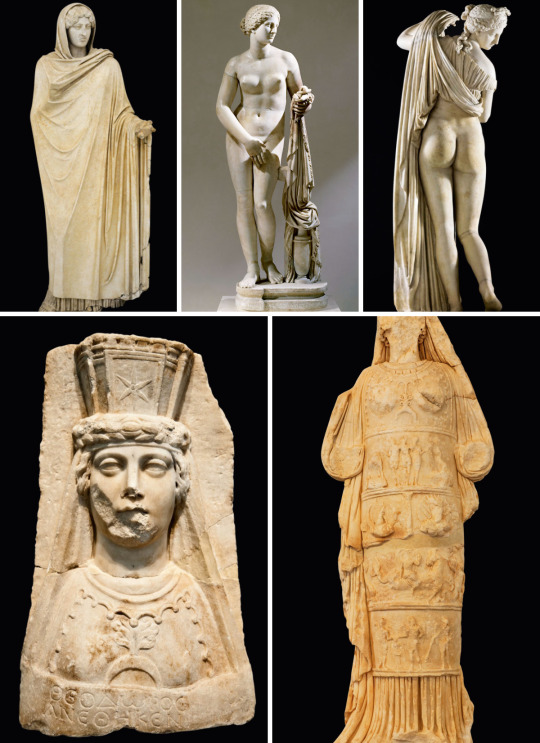
Top: Left to Right
In the Mid-Fifth century B.C., the sculptor Calamis created the “Aphrodite Sosandra” (Savior of Men), to adorn the entrance of the Acropolis in Athens. The original, made of bronze, is today only known through marble copies made in the Roman period, such as this one shown. She wears a loose-fitting, long mantle. Her head is draped, and her severe expression encapsulates the sublime beauty of the gods. Prism/Album
From the Fourth Century B.C., it was typical to depict Aphrodite as a naked woman drying herself after bathing. The first known example is “Aphrodite of Cnidus,” a statue made around 350 B.C. by the Athenian sculptor Praxiteles. A second century A.D. replica from the Altemps Palace in Rome is shown here. The statue adorned the temple to Aphrodite in Cnidus, a port city in Asia Minor, and was so popular that it quickly inspired a range of copies and variants. Dea/Album
The Sexual Aspect of Praxiteles’ Statue became even more evident in later variants, such as the “Venus Callipyge,” meaning “Venus of the beautiful buttocks,” from the the first to second centuries B.C. Akg/Album
Bottom: Left to Right
A Second to Third Century A.D. Roman Bust of Aphrodite wearing a crown shaped like a calathos (a basket symbolizing abundance) from the theater of Aphrodisias. Dea/Album
In the Greek Art of the Sixth and Fifth Centuries B.C., Aphrodite was depicted as a fully clothed, majestic goddess. Other representations of Aphrodite from this period emphasized her lavish dress, such as this shown replica, displayed in the sanctuary of Aphrodite at Aphrodisias, today in turkey. From the fourth century B.C., she started to appear as the now iconic image of a voluptuous naked woman. Martin Siepmann/Age FotoStock
An alternative version of that gory Greek origin myth tells us that Aphrodite was born from a union of Zeus and the sea nymph Dione. On the southwest coastline of Cyprus (called Aphrodite’s Isle) during the wintertime, storm waves hit the dramatic coast at 90 degrees, with rising high, curious, shape-shifting columns said to be Aphrodite herself. It is still possible to witness this strange phenomenon, a ghostly reminder that salty Venus-Aphrodite was believed to be immortal and responsible for the primal urges of humanity, as well as the delicate, complex business of human relations. In the first century B.C., the Roman author Lucretius described this intriguing, inspiring, influential deity as “the single guiding power of the universe.” Aphrodite Pandemos indeed.
#Love#Religion#Ancient Greece 🇬🇷#Women#Cult of Aphrodite#Ancient Attitudes#Desire#Ancient Divinities#Aphrodite: Patron Over Love | Beauty | Fertility | War#Venerated Greek 🇬🇷 Deity#Complex | Rise | Fame
4 notes
·
View notes
Text
Can't believe some women really fell for men who victimize themselves to "own the feminists1!!" by bringing up "gender inequality" in order to guilt trip women into paying for the bills on dates. I would never judge women who who still date men and have them pay for dates because often times these moids that are fixated on women paying for dates are just using it to dismiss feminism and have the biggest victim complexes ever. These men will be very vigilante on fighting for "gender inequality" on their own front for their own benefit, never missing a chance to try to humble women but you won't hear a single peep out of these fuckers when it comes to very serious gender inequality (feminism) issues like rape or violence against women.
They also fail to acknowledge that it was men who dictated gender norms including those surrounding courtship because it was an "investment" on their behalf since women were/are the only one's who could get pregnant and have children, something that is a status symbol for men where they could become the patriarchs/head of a family. Sex is also riskier for women because of pregnancy so women are more careful. All of these have made men need to prove their worth "bring something to the table" and you'll even see men who will parrot the whole "being a provider" line and express envy at women who (in their eyes) have "an easy life" because of the inherent worth in being about to give birth.
And now you have men out there who still want to be patriarchs without "providing" and utilizing feminism (under the gender equality definition) that wasn't intended for them to "fight for men's rights" in order to maximize their own benefits whilst women still get the burden of pregnancy if for ex. they have sex with some moid on a date (which men cry about all the time and use their paying of dates as entitlement) and all of the domestic/child-raising labor that comes afterwards. But of course all of this gets conveniently left out of the picture to frame women as these solely money hungry, transactional "gold diggers". Women "loose" in the long run when it comes to dating men but all the whining about men paying on dates was always manipulative when if you pay attention men themselves know damn well them paying was always transactional on their part and now they're angry that it won't guarantee them sex or a wife long term, because women can now say 'NO' even after men's "investments", and it makes men feel like they've been robbed. Courtship one men's behalf was never about pure romance but on securing a future status symbol or family via a woman. Don't feel bad for men and their own victimization.
#ic.text#also if it's not obvious women shouldn't see themselves as the hyper-feminine divine femininity fertile goddess or as prizes#but please be aware of your own worth through men's eyes and don't project your own intentions onto them#and navigate the dating sphere ( if ur still dating men...for whatever nuts reason) accordingly
2 notes
·
View notes
Text
Lilith calling you "(little) spark" as a nod to Gnosticism's spiritual essence that created life 🥺
#ooc : the mortal#we are all divine sparks#but i think there's a sadness to this nickname#at least until Charlie is born bc of her fertility issues#so her taking to calling everyone this (regardless of age) might feel ancient; bittersweet yet adoring
4 notes
·
View notes
Text
🔒 A secret kink I haven’t shared yet
you spoke.
I listened.
You're welcome.
🩸 Eggster // Nestwife’s Offering
I was chosen under a blue moon.
Before the sun reached its highest heat. Before the fields ripened. Before I even understood why the ground shook when I moaned.
They marked my door with ash and sap. They filled me beneath that swollen, haunting sky— not with seed, but with something older. Something sacred. So full I couldn’t move. So blessed I didn’t want to.
My womb is not mine during Eggster. It’s the nest. The altar. The offering.
I lay what I’m given. And the gods always come back for more.
🥚EGGSTER 2025: The Virgin Hunt Begins
“You must become the basket.” — The First Nestwife, bred beneath the dogwood moon
Spring has always been about rebirth. But before the church swallowed it, before the pastel poison of innocence took hold... there was only flesh. Seed. Fertility. Sacrifice.
They called him the Bunny to soften the truth. But he is older than Ostara. Older than Beltane. He is the Horned One’s bastard—reborn each spring with one need: to hunt, to fill, to breed
🐇 The Virgin Hunt
He sniffs them out—untouched, unspoiled, trembling. Not every virgin is physical. Some are spiritual. Emotional. Some are just naïve enough to believe he won’t choose them.
They’re taken in the night.
Dragged from their sheets with a warm breath against their thighs, fur matted with dew, claws pressing into hips. You wake up face down in the grass, and by the time he’s done with you, you’re swollen, sticky, and full of a clutch that pulses beneath your skin.
✦ The Eggster Rites ✦
Lay your eggs before dawn. If they hatch within the nest, you're marked as fertile.
Those who resist are filled anyway. His lust is ancient. Your no means little to a god of renewal.
Your womb is not yours on Eggster. It belongs to the season. To him.
Once you've laid, you become a Nestwife. You will ache for his return each year.
The youngest host to bear clutch is crowned The Blooming. They wear nothing but lilies and scars.
How to Prepare (or Submit):
Smear fresh blood on the threshold if you want him to pass you by. (No promises.)
Sleep nude. Keep your thighs parted. Offer yourself in prayer—or defiance.
If you are willing, mark yourself with a painted egg between your breasts. He will know.
You Are the Basket.
You were never meant to hide the eggs. You were meant to be filled with them. To shudder as they slide inside, soft and heavy. To moan as they stretch you from within. To kneel as you lay them onto the altar of spring.
The Prayer.
“Blessed be the fertile. Blessed be the filled. Blessed be the hunted.” — Eggster scripture, burned in the Grove of First Bloom
Pretty fucking sure this is an eggcellent idea if anyone wants to expand on this fantasy.
Be a Nestwife with me?
XOXO,
Miranda
#nestwife#eggster#sacred kink#fertility kink#worship kink#ritual offering#pagan fantasy#divine submission#moon soaked#goddess vessel#altarpunk#body as altar#mythic kink#worship wednesday#kinktober year-round#dark divine#full moon rites#dripping reverence#soft corruption#sex magick
3 notes
·
View notes
Text
the thing is that i would very much like to talk about the divine feminine, but no one seems to want to discuss it as a serious religious, folkloric, and mythological subject with diverse interpretation across the millenia and geography of human society but rather to gesture at a commodified spirituality that neatly repackages an imagined (white, christian, anglophone, heteropatriarchical, capitalist, upper middle class) womanhood into something simultaneously stripped of a real connection to its history identities and theology/philosophy while also promising the feeling of a interconnected and vibrant spiritual world. like im sorry but instagram witchcraft and evie magazine will offer you only a facsimile aesthetic of transcendence. can we move on to comparing kali and sekhmet
#named#no one is a broad gesture there are people out there doing it#im just tired of the inundation of faux spirituality divine feminine being a fucking marketing gimmick for weightloss guasha workouts cryst#ls makeup clothing music bedding jewelry food supplements dating apps#literally anything hormone or fertility related#its exhausting
5 notes
·
View notes
Text
Readiness and fertility are subject to the cosmic womb’s emotional current.
11 notes
·
View notes
Text
Ostara: The Wild Awakening – A Pagan & Fantasy Guide to the Spring Equinox
(As told by Runa the Wild Elf) Greetings, Nutlover and Roleplayer, Welcome seekers of mystery and magic! The Wheel of the Year turns continuously and the whispers of spring stir in the waking earth. Ostara, the festival of balance, fertility, and renewal, is upon us! It is a time when the day and night dance as equals, the land bursts into bloom, and the old slumbering spirits rise from their…
#Ancient Magic#Anglo-Saxon goddess#Bonfire#bonfire ceremony#Brigid#celtic traditions#chaotic fair#creation#Danu#Druidic Stone Circle#Easter#Easter Egg#Easter Hunt#egg divination#egg hunt#eggs hunt#enchanted eggs#Eostre#Fae games#Fae Meadow#fertility#festival of balance#forbidden fruits#Freya#hare hunt#Herald of Spring#Idunn#Isle Of Dee#ivy#light and dark
2 notes
·
View notes